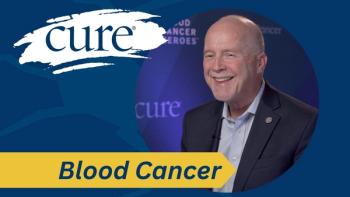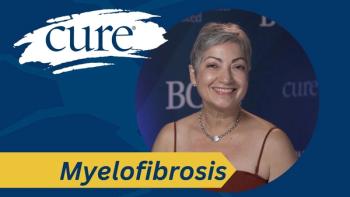
Onivyde Combo Improves Outcomes for Patients with Metastatic Liver Cancer
Onivyde combined with a chemotherapy agent and a chemotherapy-protective drug should be used as a second-line treatment option in patients with metastatic liver cancer, according to an expert.
Patients with metastatic biliary tract cancer whose disease progressed after first-line treatment with the chemotherapies gemcitabine and cisplatin achieved survival improvements with Onivyde (liposomal irinotecan) in combination with the chemotherapy 5-fluorouracil and the chemotherapy protective drug leucovorin in the second-line setting, according to recent findings.
The data, which were from the phase 2 NIFTY trial, were presented at the 2021 American Society of Clinical Oncology (ASCO) Annual Meeting.
“(Onivyde) plus (5-fluorouracil/leucovorin [5-FU/LV]) should be considered as one of the standard treatments for patients with advanced biliary tract cancer (whose disease has progressed) on gemcitabine/cisplatin,” said lead study author Dr. Changhoon Yoo, assistant professor in the Department of Oncology at the University of Ulsan College of Medicine and Asan Medical Center in Seoul, Korea, in a presentation of the data.
At a median follow-up of 11.8 months, the median progression-free survival (the time that a patient lives with cancer worsening) for patients treated with Onivyde plus 5-FU/LV was 7.1 months compared with 1.4 months for patients treated solely with 5-FU/LV. These data correspond with a 44% reduction in the risk of progression. The median overall survival (time that a patient with cancer is still alive) was 8.6 months and 5.5 months, respectively.
Onivyde is a topoisomerase inhibitor, meaning it blocks activity of the enzyme topoisomerase to kill cancer cells. It contains SN-38, an active metabolite of irinotecan that binds reversibly to the topoisomerase 1-DNA complex and prevents religation (rebinding) of the single strand breaks. The Food and Drug Administration previously approved this agent
The study authors hypothesized that Onivyde would elicit a similar response in patients with biliary tract cancer because of biologic similarities in the tumor stroma (connective tissue, blood vessels and inflammatory cells). They enrolled patients with metastatic biliary tract cancer with a least one measurable lesion, confirmed radiological progression following first-line gemcitabine/cisplatin, no prior treatment with second-line chemotherapy, adequate organ function and an ECOG performance status (a patient’s level of functioning in terms of the ability to care for themselves) of 0 to 1.
A total of 174 patients were randomly assigned to receive Onivyde 70 mg/m2 on day one plus 5-FU (2,400 mg/m2) on days one and two plus LV (400 mg/m2) on day one every two weeks (88 patients) or 5-FU/LV every two weeks (86 patients) until their disease progressed per investigator review or they had intolerable toxicities.
The treatment groups were well balanced; the median age in the Onivyde plus 5-FU/LV arm was 63 years (range, 38-84) and 65 years (range, 37-80) in the 5-FU/LV alone group. Intrahepatic carcinoma was most common across the groups (39.8% vs 45.3%, respectively), followed by gallbladder (35.2% vs 25.6%) and extrahepatic carcinoma (25% vs 29.1%). The median duration of first-line gemcitabine was 5.1 months and most patients had not undergone prior curative-intent surgery, 70.5% and 66.3%, respectively.
Additional progression-free survival data showed a six-month progression-free survival rate of 55.7% for those in the Onivyde plus 5-FU/LV group compared with 26.2% in the 5-FU/LV group.
Investigator-assessed progression-free survival data demonstrated similar efficacy outcomes favoring the addition of Onivyde. The median progression-free survival in the combination group was 3.9 months compared with 1.6 months in the 5-FU/LV only group. The six-month progression-free survival rates were 30.6% and 11.6%, respectively.
Overall survival rates were also reported for both regimens. The six-month overall survival rate for the Onivyde group was 60.7% compared with 45.9% in the 5-FU/LV group. The one-year overall survival rates were 35.4% and 22.4%, respectively.
Onivyde plus 5-FU/LV elicited an objective response rate (the percentage of patients with partial and complete responses to the treatment) of 14.8% compared with 5.8% with 5-FU/LV alone. Half of patients in the Onivyde group had stable disease and 14.8% had a partial response versus 29.1% and 5.8%, respectively, in the 5-FU/LV group. More than half of patients in the 5-FU/LV group had progressive disease (64.0%) vs. 29.5% in the Onivyde group. No complete responses were reported in either treatment group.
“The safety profile for (Onivyde) plus 5-FU/LV was consistent with that seen in the previous NAPOLI-1 trial for pancreatic cancer,” said Yoo. “Neutropenia and fatigue were the most commonly observed any-grade and (serious or severe side effects) for the (Onivyde) plus 5-FU/LV group.”
Specifically, neutropenia of any severity was reported in 33% of patients in the Onivyde plus 5-FU/LV group vs. 3.5% in the 5-FU/LV group. Incidence of any severity fatigue was reported in 30.7% of patients in the Onivyde group compared with 19.8% in the 5-FU/LV group.
“We assessed patient-reported quality of life … measured over eight cycles of the study treatment,” Yoo said. “Overall quality of life was well-preserved in both (groups) and there were no clinically meaningful differences in global health–related quality of life in the (groups).”
Finally, 34.9% of patients in the Onivyde plus 5-FU/LV group went on to receive post-study treatment and the most common therapy was fluoropyrimidine plus cisplatin or oxaliplatin (17.4%). In the 5-FU/LV group, 31.8% of patients went on to receive post-treatment therapy, the most common of which (11.8%) was Keytruda (pembrolizumab).
Yoo noted that although the study was conducted only in Korea, the study was appropriately powered to compare two treatment groups and was designed for meticulous tumor response evaluation. He added that the combination should be considered as a treatment option for patients with biliary tract cancer in the second line.
For more news on cancer updates, research and education, don’t forget to




